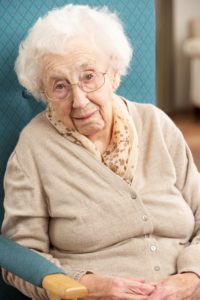 By Alicia Schwartz, MSN-ED, BSN, RN, PCC, CCM, VNSNY CHOICE Health Plans
By Alicia Schwartz, MSN-ED, BSN, RN, PCC, CCM, VNSNY CHOICE Health Plans
It’s not unusual to experience an increased desire to curl up on the sofa and “hibernate” when the weather turns cold, but for older folks with chronic illness like asthma, COPD, diabetes, dementia or heart disease, retreating to the indoors can lead to social isolation and sometimes trigger serious health problems.
It is especially important to keep in mind that at this time of year, when we tend to focus on festivities and gathering with friends and family, the pain of isolation can be particularly sharp for people who live alone or are uncomfortable talking about changes that they may be experiencing as they age.
A critical component of my work as a registered nurse with VNSNY CHOICE Health Plans involves helping frail and vulnerable seniors avoid isolation so they can stay engaged with their families and friends—or connect with resources in the community when there are no others to turn to. Here are a few important reminders to keep in mind to help those we love avoid the chill of social isolation and the downward health spiral that it can potentially cause.
Body Image and Social Comfort
As we age, incremental changes in vision, mobility, hearing, memory and a host of other sensory and bodily functions naturally occur. Even someone who was physically active all him/her life will almost certainly struggle with declining abilities in later years. In a “Review of Social Isolation” by Nicholas R. Nicholson, research shows that some older adults avoid social interaction because of bodily discomforts or reduced ability to function. This can include embarrassment about body image or an inability to control bodily functions. Even seniors with mild hearing or vision loss that have not been diagnosed or treated may avoid social gatherings when communicating becomes difficult and tiring as a result.
If this sounds like someone in your family, or one of your neighbors, it may be helpful to gently inquire if the person is struggling with one of these common issues and encourage them to seek medical help. You may want to offer to accompany them to an appointment or refer them to resources in the community that can support them and help them regain confidence and self-esteem.
Moving Out and Getting Around
Mobility is a real problem for many older folks. Even in a city like New York, where public transportation is a priority and many public places are reasonably accessible, lack of transportation can be a major cause of social isolation. One of the women I coordinate care for drew strength and joy from attending church services in her neighborhood, but when her illness started slowing her down, she felt that she couldn’t keep up with the ladies she’d attended services with for several years and eventually she stopped going altogether.
I spoke with her primary care physician and he agreed that a wheel chair might be a great help to her for navigating longer distances. Now, she joins her friends for services at least once a week, and sometimes even takes in a movie afterwards. She’s gone from sitting alone and sad to feeling much more a part of life. When someone is at risk for social isolation, it can also be helpful to encourage them to take advantage of senior centers and other community organizations that may offer meals and a safe place to visit and socialize with others on a regular basis.
Weathering the Storm
Shorter days, cold weather, rain and ice—and the opposite, extreme heat—can be a deterrent for socializing too. Arthritis can cause aches and limited mobility and fear of falling is a serious concern for many older people who do not feel as sturdy on their feet as they once did. In the winter months, many people suffer from Seasonal Affective Disorder (SAD) or Sundowning, a term used to describe the agitation, irritability, confusion, and disorientation that as many as 20 percent of all people with dementia experience in the late afternoon and evenings. Both of these conditions can trigger depression and social isolation.
Keeping active indoors may take a little extra creativity, but it can be done. When one of our VNSNY CHOICE care coordinators noticed that a member had a friendly neighbor who liked to stop by for frequent visits, she coordinated with a home health aide and the neighbor, teaching them how to safely exercise by taking walks indoors through the areas of the apartment complex. The activity is something they all look forward to now and they occasionally even inspire others to join them.
It is sometimes challenging to remember that “change is the only constant,” as the philosophers say, and aging certainly involves a lot of change. What is important to remember is that when people stay engaged with the people and things that they love most in life, and when they feel a sense of purpose about what they do from day to day, they are usually more independent and able to take responsibility for their own wellbeing. In my work, helping older New Yorkers avoid the chill of social isolation is key to ensuring that they are living their best life possible.
For more information about VNSNY CHOICE Health Plans from the not-for-profit Visiting Nurse Service of New York, please call 1-888-867-6555 or visit www.VNSNYCHOICE.org.











